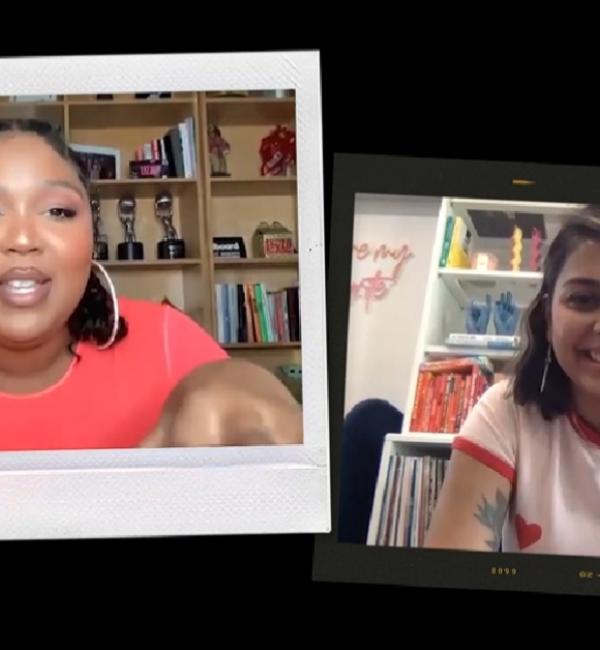via Faster Louder
Still baffled by ‘Thrift Shop’s Hottest 100 success? Brisbane musicologist Jadey O’Regan takes a look “under the hood” of Macklemore and Ryan Lewis’ novelty hit to find out why it resonated with so many people.
Hello there, and welcome to our first “musicological review” of popular music. What is musicology? Well, very basically, it is studying how music functions – its notes, melody, harmony, rhythm, structure, instrumentation, among many other aspects.
When academics study “western art music” (what the public calls “classical music”), they tend to focus on the parts of the music that can be easily seen on a score (sheet music – the pages with all those lines, dots and sticks). This is the “traditional” approach to musicology. The musical “stuff” they’re best at representing are melody and harmony; which notes are played at the same time, and which way the melody goes. This works pretty well for lots of western art music, which is all about melody and harmony. But it’s not so good at displaying other kinds of musical “stuff” that are really important to popular music. For example, how can a score show a guitar’s distortion? Production effects like reverb? Samples? Scratching?
To study popular music, we need to try and do things a bit differently. To help make popular musicology easy to understand, I will use some pictures, drawings and tables to help convey what’s going on in the music, instead of those dots, lines and sticks.
Because musicology tends to be so focused on melody and harmony, it neglects hip-hop. Hip-hop is all about rhythm, lyrics, and musical texture, which is usually filled with layers of electronic sounds and samples. Hip-hop melodies can also be quite clever and inventive, however are often overlooked as they are not traditionally “sung”. Instead, the academics that look at hip-hop usually analyse it from the angle of social or cultural studies, linking the genre to issues of race and class. This is undoubtedly important; hip-hop has a huge cultural influence. But these angles rarely explore how hip-hop works musically, which is equally as interesting. Often what is going on in the music reinforces these cultural connections.
What’s under the hood?
‘Thrift Shop’ by Mackelmore and Ryan Lewis (featuring Wanz) was a #1 hit in Australia at the end of last year, and also took out #1 spot on triple j’s Hottest 100 countdown in January. The song has been discussed in great detail in reviews and on blogs that have mentioned Macklemore’s obvious “whiteness”, his meteoric success, and how both of these things sit (often uncomfortably) within the hip-hop community. And, well, the internet has definitely got that angle covered. So instead, let’s will approach the song in a different way – to have a little look “under the hood” to see what made this #1 single work musically. Let’s look at one of the most interesting musical “bits” of ‘Thrift Shop’ – its use of a looping saxophone riff.
The saxophone sample used in ‘Thrift Shop’ is probably the song’s defining feature. It repeats through almost all of the verses and choruses, and it underpins a lot of the cleverer things in the song. The saxophone riff works in three main ways. Firstly, its sharp melodic contour relates back to its lyrical themes; secondly, it gives ‘Thrift Shop’ its only harmonic material; and thirdly, its syncopated “skipping” rhythm creates a continuous restlessness. The riff is a deceivingly complicated little phrase that is based on an Ab minor chord (I have transposed this for piano), which looks a little like this if you map the contour of the melody:
Its “spiky” melodic contour subtly underpins the sharp and biting nature of its lyrics, which are fundamentally an attack on hip-hop’s apparent need to showcase frivolous spending and wealth (or, er, bling!). The melody both starts and finishes with two large octave leaps, and in between them, skips over the 5th, minor 3rd and 4th, the latter of which never fully resolves. When a musical section “resolves”, it usually means it goes back to the note or chord on which the phrase began. It’s what gives us that feeling of release when we listen to music. In ‘Thrift Shop’, the fourth note (which we musicology dorks would call a suspension) never resolves back properly. The saxophone phrase ends on the minor 3rd instead of the 1, which leaves us feeling a bit uneasy. These large leaps, and the short, sharp way the notes are played goes a long way to giving the song its quirky, stilted feel.
The broken Ab minor chord in the saxophone riff is pretty much the only harmonic material during the verses; the verses are otherwise all about rhythm and sound. Most pop songs are based on a repeating set of chords (for example, a 12-bar blues in C will use C, F and G chords). ‘Thrift Shop’, on the other hand, is not the kind of song a songwriter would write at a guitar or piano. This song is a collection of rhythmic layers, and the great “hole” in the arrangement that would ordinarily be filled by chords is instead filled with this repeating riff. ‘Thrift Shop’s’ minimalism pushes what is present – the Casio-style beat, the saxophone riff and the lyrics – right to the front of the song./
‘Thrift Shop’ only lands on some solid harmonic footing during the bridge section under the lyrics that start, “I wear your grandad’s clothes, I look incredible…” Here, a full Ab minor chord is heard, which moves through a C major, Db major, C major and back to Db major before it repeats. The entrance of this ascending progression gives the song a tangible ‘lift’ which underpins the increased self-confidence expressed in the lyrics at this point. The vocal melody, half spoken, half sung, moves in contrary motion to the chords with phrases ending in a downward arc. This combination of ascending and descending adds an expectant tension, making this part of the song feel like a climax before it slides back into the familiar chorus.

Finally, the syncopated rhythm of the riff is what gives the song its awkward swagger. The combination of these long and short notes never quite combines into a solid “groove”, unlike most hip-hop. This not-quite-shuffle is not straightforwardly danceable, which is played out well in the song’s self-deprecating/self-aggrandising video clip, where you’ll see that the slow motion club dancers never actually dance in time to the beat.
The layering of this awkward, spiky riff against the Casio beats, the stutter of lyrics, the littering of samples and children’s voices all comes together to make ‘Thrift Shop’ an odd jumble of song. It’s not unlike a thrift shop itself (or as we would call it here – an op shop). Musically, it plays out as a mix of varying styles that Macklemore and Ryan Lewis have “tried on” and paraded around in – some garish track pants, a woolly scarf, a child’s old hat. It sounds silly on the outside, but like the onesies described in the song, with enough swagger, it totally works.
Jadey O’Regan is a sessional lecturer and tutor at Griffith University (Queensland Conservatorium) and JMC Academy in Brisbane. She is currently finishing her PhD on the music of the Beach Boys in the 1960s.








